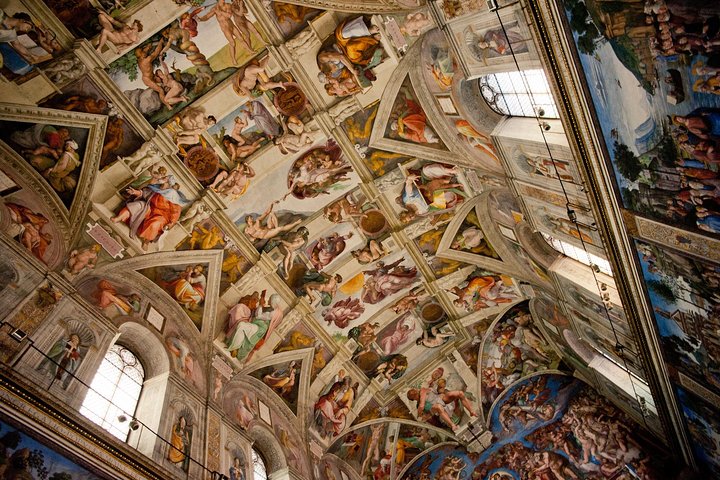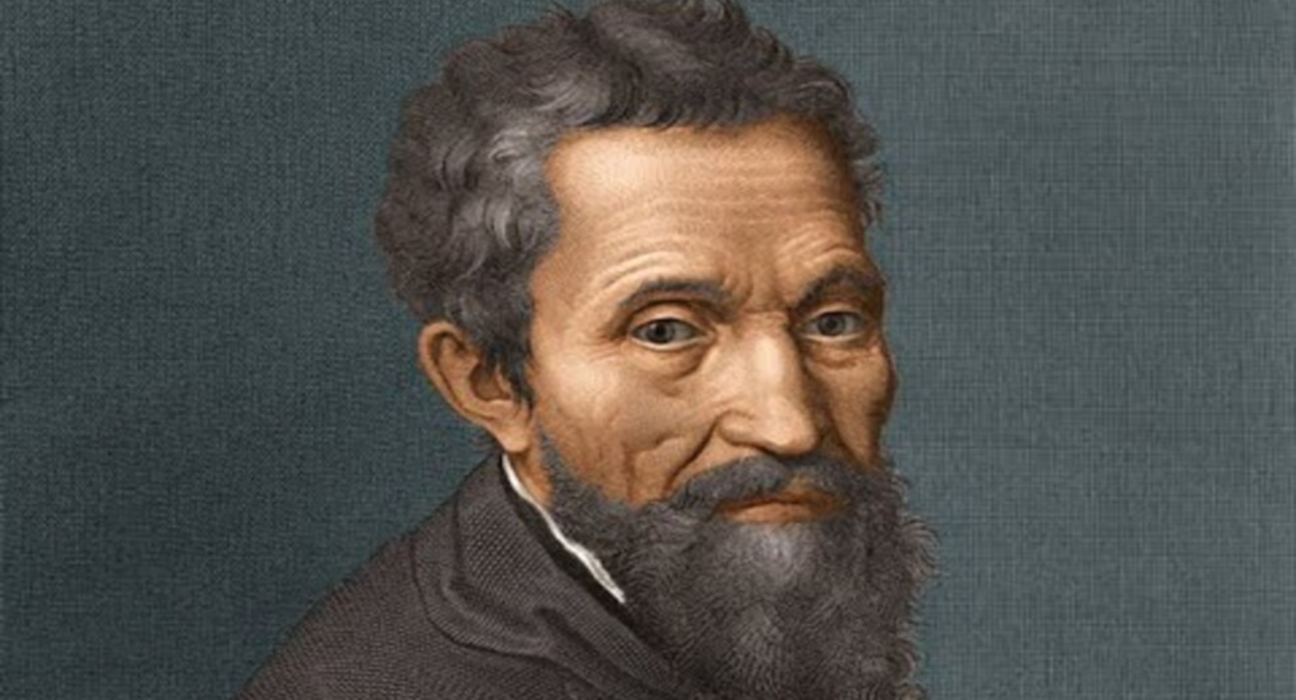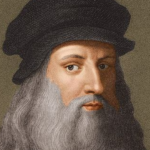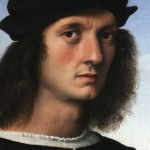Michelangelo Buonarroti, a name that resonates profoundly within the vast tapestry of art history, embodies the quintessence of the Renaissance. This remarkable period, marked by an unquenchable thirst for knowledge, beauty, and self-expression, found its embodiment in the life and works of this extraordinary artist. Born on March 6, 1475, in Caprese, Italy, Michelangelo was not merely a sculptor; he was a multifaceted genius—a painter, architect, and poet—whose diverse talents intertwined to create masterpieces that continue to captivate humanity’s imagination and provoke thought. His unparalleled ability to convey profound themes of human emotion and divine inspiration remains unmatched, inviting each observer to delve into the depths of their own existence.
The Sculptor of Humanity: Breathing Life into Marble
Perhaps the most celebrated aspect of Michelangelo’s oeuvre lies within his sculptures. Works such as David and Pietà exemplify Michelangelo’s unrivaled precision and masterful artistry, where he managed to breathe life into cold marble, transforming it into evocative representations of the human condition.
David: The Epitome of Humanistic Ideals

The statue of David stands as a monumental symbol of Florentine civic pride, showcasing not only the biblical hero but also embodying the ideals of strength and beauty inherent in the human form.
From the very first glance, one cannot help but be overwhelmed by the intricate details of David’s musculature and the intensity of his gaze. Michelangelo’s deep understanding of anatomy is evident; he viewed each piece of stone as a living entity eagerly waiting to be liberated from its confines. Each curve and contour reflects a dynamic interplay of tension and grace, inviting viewers to contemplate their own hidden potential.
Pietà: An Intimate Reflection on Grief and Compassion
In stark contrast to the triumphant figure of David, Pietà offers a poignant reflection on grief and compassion. Michelangelo captures an intimate moment between Mary and the dead Christ, evoking an emotional depth that transcends time and culture. Rather than focusing solely on sorrow, the sculpture conveys a profound sense of grace and devotion, reflecting Renaissance ideals of beauty and divinity.
The composition follows a pyramidal structure, drawing the viewer’s eye upward and emphasizing Mary’s quiet strength and spiritual transcendence. Her flowing robes, intricately carved, add a sense of fluidity that contrasts with the stillness of Christ’s lifeless form. Michelangelo’s mastery of marble is evident in every detail, from the gentle tilt of Mary’s head to the finely carved veins on Christ’s arms, making the sculpture appear almost lifelike despite its stone medium.
The Role of Emotion in Sculpture
Michelangelo’s sculptures are not mere representations; they are embodiments of deep emotions and complex narratives. In David, the quiet intensity of his gaze captures a moment of determination and resolve, while in Pietà, the tender sorrow of Mary conveys both grief and acceptance.
His ability to infuse stone with profound emotion reflects a keen awareness of the human psyche, allowing viewers to connect with his works beyond their aesthetic appeal. As we observe these figures, we are drawn into their stories, compelled to reflect upon our own experiences.
Painter of the Divine: The Sistine Chapel Ceiling

While Michelangelo is renowned for his sculptures, his contributions to painting are equally monumental. The awe-inspiring frescoes of the Sistine Chapel ceiling represent one of his most significant accomplishments, showcasing scenes from Genesis that culminate in the iconic Creation of Adam.
Commissioned Brilliance: A Testament to Vision
Commissioned by Pope Julius II, Michelangelo’s work on the Sistine Chapel ceiling involved an ambitious undertaking, transforming a plain surface into a vibrant tableau of divine creation. The grandeur of this project speaks to the artistic ambitions of the Renaissance, as Michelangelo sought to elevate the viewer’s understanding of God and humanity alike.
At the heart of this masterpiece is the Creation of Adam, wherein God reaches out to touch Adam’s finger—a moment that has become one of the most replicated images in Western art. This image encapsulates a fundamental question of existence: Are we simply creations of a higher power, or do we possess the agency to shape our destinies?
This duality reverberates through the entirety of the ceiling, as Michelangelo incorporates a range of figures—each imbued with both physical prowess and spiritual struggle. The dynamics of these figures, often portrayed in exaggerated poses and expressions, compel viewers to grapple with the complexities of human existence.
Exploring the Duality of Creation and Destruction

As we gaze upon the frescoes, we witness Michelangelo’s masterful depiction of the tension between heaven and earth, creation and destruction. The ceiling of the Sistine Chapel is not merely a celebration of divine order but also a meditation on the inevitable forces of decay and struggle.
His figures, imbued with both physical intensity and spiritual yearning, embody this duality—where the vitality of Adam’s creation is mirrored by the foreboding presence of the prophets, who foresee the trials of humanity. The Deluge, with its chaotic depiction of desperation and loss, stands in stark contrast to the divine touch in The Creation of Adam, reminding us that destruction is not merely the opposite of creation, but an intrinsic part of the cycle. Through these juxtapositions, Michelangelo urges viewers to contemplate not only their aspirations toward the divine but also the transience of earthly existence.
Reflections on Artistic Legacy
The legacy of Michelangelo’s painted works continues to influence generations of artists and thinkers. His ability to merge spirituality with artistic expression sets a standard for those who seek to explore deep truths through their craft. As we examine the intricacies of his frescoes, we are reminded of the potential art holds to inspire dialogue surrounding existential questions.
Moreover, Michelangelo’s works invite contemporary artists to embrace their own explorations of divinity and humanity. By engaging with the spiritual dimensions of their practices, artists can encourage audiences to ponder life’s mysteries while fostering a sense of connection to something greater than themselves. In this way, Michelangelo’s influence endures—not solely as an artist, but as a visionary who shaped the cultural landscape.
Architect of Legacy: Shaping Spaces
Michelangelo’s artistry extended well beyond sculpture and painting; he was also a visionary architect whose work left an indelible mark on the realm of architectural design. His involvement in the construction of St. Peter’s Basilica in Vatican City further solidified his reputation as a Renaissance polymath.
Blending Classical Principles with Innovative Design
.jpg?w=340&dpr=2)
Michelangelo approached architecture with the same innovative spirit that defined his sculptures and paintings. He skillfully integrated classical principles with his own bold design choices, pushing the boundaries of Renaissance architecture.
The dome of St. Peter’s Basilica, one of his most celebrated achievements, is a testament to his ingenuity. By refining the original plans and reinforcing the structural integrity of the dome, Michelangelo ensured both aesthetic grandeur and engineering stability. The soaring height and harmonious proportions of the dome not only enhance the visual impact of the basilica but also create an uplifting spatial experience, guiding the viewer’s gaze upward in an implicit gesture of spiritual elevation.
Inside St. Peter’s, Michelangelo’s architectural mastery is evident in the careful orchestration of space, light, and form. His design choices cultivate an atmosphere of reverence and contemplation, demonstrating his deep understanding of how architecture can shape human experience.
Architecture as Expression: The Lasting Influence of Michelangelo
Sacred spaces have long held significance across cultures and religions, acting as conduits for reflection and communion with the divine, and Michelangelo’s work in St. Peter’s Basilica exemplifies this tradition. His architectural decisions made for St. Peter’s encompass more than aesthetic beauty; they evoke a profound sense of humility and veneration.
When we enter St. Peter’s Basilica, we are invited to pause and contemplate our existence within the universe. Its design instills both awe and a sense of closeness to the divine, offering a space for reflection amid the chaos of daily life. Michelangelo’s enduring legacy, therefore, extends beyond architecture as mere shelter or a display of grandeur; it inspires a global conversation about the role of architecture in shaping our experiences as humans.
The Poet Within: Unveiling Inner Thoughts through Verse

In addition to his prowess in visual arts and architecture, Michelangelo was a thoughtful poet, utilizing verse as a means of expressing his innermost thoughts and beliefs. This lesser-known facet of his creativity reveals a vulnerable side to the man behind the masterpieces and offers insight into his complex emotional landscape.
Poetry as an Extension of His Art
Michelangelo’s poetry often grapples with themes of love, death, and spirituality. His verses reflect a candid exploration of his struggles, desires, and contemplations regarding existence. In many ways, his poetry might be seen as an extension of his visual artworks, engaging readers in a dialogue about the human condition.
As we analyze his written works, it becomes clear that Michelangelo sought to bridge the gap between art and literature. This synthesis allows for a richer understanding of his perspectives, encouraging us to consider how different forms of expression illuminate our experiences.
Much like his sculptures and paintings, Michelangelo’s poetry resonates with an emotional depth that invites readers to engage intimately with his thoughts. This approach fosters an appreciation for the myriad ways in which artists articulate their inner worlds, whether through brushstrokes, chisel strikes, or carefully crafted verses.
Themes of Love, Mortality, and Spiritual Longing
Michelangelo’s poetry often intertwines themes of love, mortality, and divine devotion, reflecting his inner struggles and philosophical inquiries. His verses not only express earthly longing but also a deep yearning for spiritual transcendence and divine grace.
His words echo the sentiments of longing and desire, exploring the nuances of love that often elude definition, while his reflections on death prompt us to confront the impermanence of life. Yet, beyond personal affections, his poetry reveals a soul caught between the fleeting physical world and the pursuit of salvation. Much like the emotional intensity of his visual art, his verses depict his own struggle to reach the divine, embodying both human vulnerability and spiritual aspiration. His works serve as a plea for redemption, underscoring the enduring power of faith and the hope of the soul’s ultimate liberation.
Ultimately, Michelangelo’s poetic voice enriches our understanding of the artist, revealing him as a multifaceted thinker who grappled with universal truths. His ability to weave together themes of love, death, and spirituality reinforces the notion that all art is intertwined, not only as a reflection of human experience but also as a means of seeking divine truth.
Embracing Vulnerability in Creative Expression
Through his poetry, Michelangelo encourages us to explore the connections between our own experiences and the broader human narrative.
In doing so, we are reminded that vulnerability can be a source of strength, allowing us to forge deeper connections with ourselves and others. As we embrace our emotions and share our stories, we contribute to a rich tapestry of creativity that transcends individual expression.
Michelangelo’s poetic legacy pushes us to acknowledge the transformative power of art and literature in our lives. By engaging with the themes present in his verse, we can examine our own relationships and experiences, seeking meaning in both the mundane and the extraordinary.
Conclusion

In reflecting on the life and works of Michelangelo Buonarroti, we are confronted with the powerful legacy of an artist who transcended mere aesthetics to probe the depths of human existence. From the breath of life he breathed into marble to the divine narratives woven across the Sistine Chapel ceiling, Michelangelo’s artistry invites us to engage deeply with our emotions, existence, and aspirations.
As a polymath who navigated multiple disciplines with unparalleled skill, Michelangelo serves as a bridge between the earthly and the divine, compelling us to confront the realities of being human while simultaneously inspiring us to reach for the sublime. His enduring legacy reminds us that art is not confined to the pursuit of beauty alone; it catalyzes profound conversations about what it means to live, feel, and connect with the world around us.
As we continue to explore and celebrate the infinite facets of Michelangelo’s genius, may we aspire to channel our own creative energies toward enriching the human experience, honoring the timeless dialogues initiated by one of history’s greatest masters.
✉️ Stay Connected — Subscribe for Weekly Updates
Discover timeless stories, practical wisdom, and beautiful culture — delivered straight to your inbox.
*We only share valuable insights — no spam, ever.






